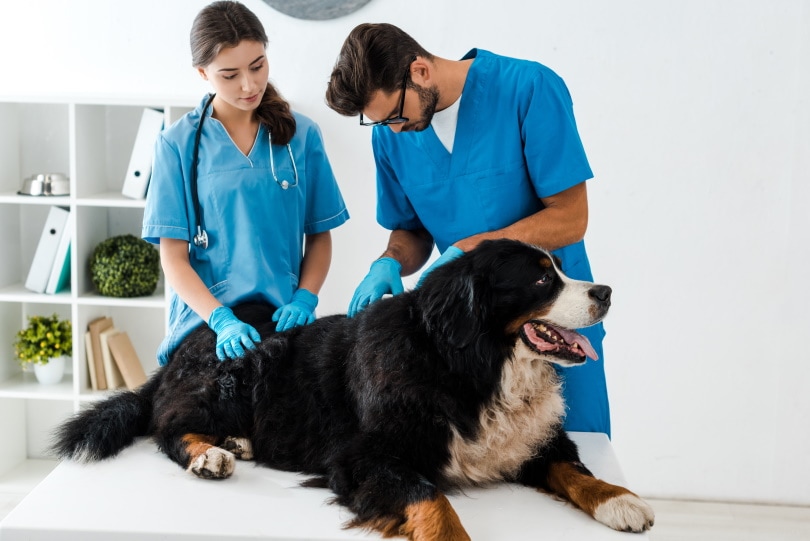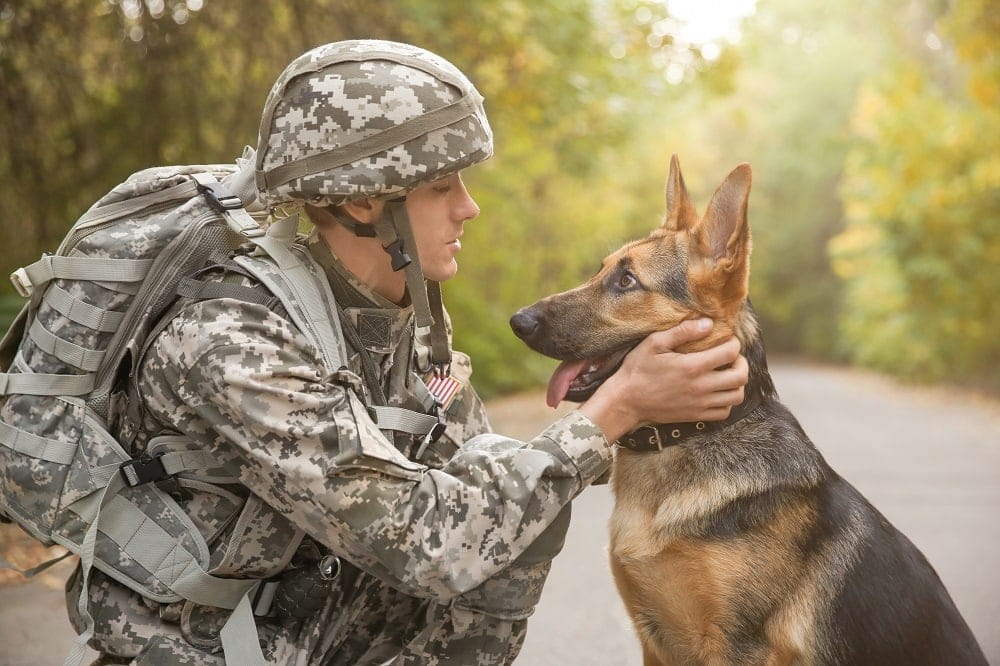Dogs can face many problems as they get older, and while we want to keep our pets with us as long as possible, we also don’t want them to suffer. One of the more complex and serious neurological conditions your dog can get is a disease called canine degenerative myelopathy. It affects the spinal cord in your pet, and while it’s not considered painful, it reduces their quality of life considerably and often leads to death. Keep reading while we take a closer look at this disease to learn more about it so we can recognize signs early on to give our pets the best life possible.
What Is Canine Degenerative Myelopathy?
As we mentioned earlier, canine degenerative myelopathy affects the spinal cord in your dog. It usually begins later in life, with most dogs first showing signs after 8 years of age. It affects the white matter in the spinal cord, and as it degrades, it cannot properly transmit signals to the brain. Many experts liken it to Lou Gehrig’s Disease. As it progresses, it can cause complete paralysis of the back legs, and in its later stages, your dog can lose control over its bladder and colon, leading to incontinence. Eventually, euthanization may be required to stop the dog’s suffering.
Causes of Canine Degenerative Myelopathy
Unfortunately, the exact cause of canine degenerative myelopathy is not known. However, some breeds are more prone to it than others, and some scientists hold the SOD-1 genetic mutation responsible. This mutation is present in several breeds, including German Shepherds, Boxers, Siberian Huskies, and Collies. Mixed breeds that use these dogs as a parent will also have the SOD-1 gene. Only dogs with two copies of the SOD-1 gene can develop canine degenerative myelopathy but not every dog with two copies will get the disease.

Signs of Canine Degenerative Myelopathy
Early Signs
In the early stages of canine degenerative myelopathy, you will likely notice your dog is stumbling around more often than usual, and they may have difficulty rising. You might also notice strange wear on the toenails, and the toes may begin to start knuckling, which will continue to worsen as the disease progresses. Your dog might also have a hard time climbing stairs, and they may show tremors.
Intermediate Signs
Some of the intermediate signs you might see as the disease progresses include the dog walking differently on their paws and having a limp tail. Your dog will have poor balance and be unable to tell where their back legs are so they can become crossed. It can be hard for your dog to get up or walk, and they will lose muscle mass in their legs. They may also start showing some signs of bladder and bowel incontinence.
Late-Stage Signs
In the later stages of canine degenerative myelopathy, your dog will be unable to get up without help. Many pet parents start thinking and speaking to their vets about euthanasia because their furry friend’s quality of life is so reduced.

How Long Can a Dog Live With Canine Degenerative Myelopathy?
Because treatment options are so limited, unfortunately, most dogs diagnosed with canine degenerative myelopathy usually live approximately 6 to 12 months, though some dogs can live as long as 3 years or more. Most scientific tests have not been successful in altering the course of canine degenerative myelopathy, but they are still trying to find a cure or at least a better way to treat the disease.

Is Canine Degenerative Myelopathy Painful?
Most experts agree that canine degenerative myelopathy is not painful for your dog, at least not physically. However, your dog might be confused about what is happening to them.
When Is It Time to Say Goodbye?
You will need to get a dog with canine degenerative myelopathy checked regularly by a veterinarian who will know when the condition becomes overwhelming for your loved one. We highly recommend listening to the doctor so you can get the most time with your pet without making them suffer. In most cases, you and your vet will agree to say goodbye when your pup can no longer get up and becomes incontinent, leaving them with a very limited quality of life.
Summary
Canine degenerative myelopathy is a very difficult condition to live with and one that we hope your dog never has to suffer from. Hopefully, the experts will find a way to treat it soon. Until then, work closely with your vet to give your dog the best care possible. Keep your dog at a healthy weight and feed them a top-quality diet. Physical therapy can make a difference, so speak to your vet about this treatment option. Soak up as much time with your precious friend as possible and get them the best care. If you have learned something new from reading this guide and know the early symptoms, please share this guide to canine degenerative myelopathy in dogs on Facebook and Twitter.
Want to learn more about other dog diseases and ailments?
- Epilepsy in Dogs: Types, Symptoms, and Info
- Congestive Heart Failure In Dogs: Causes, Symptoms, Treatment
Featured Image Credit: Hans Kemperman, Pixabay












